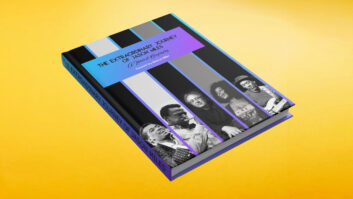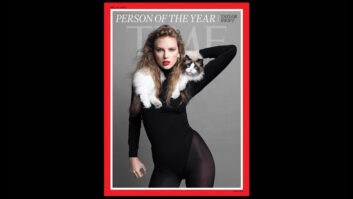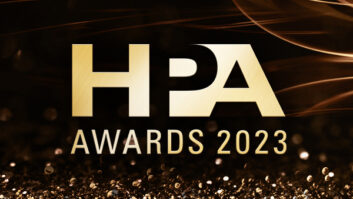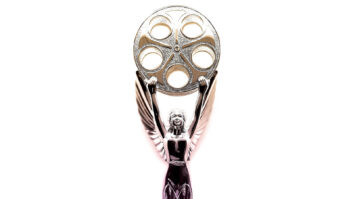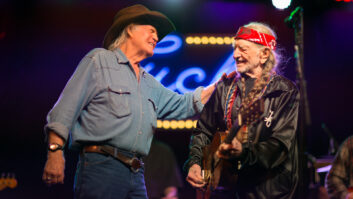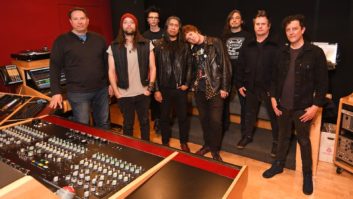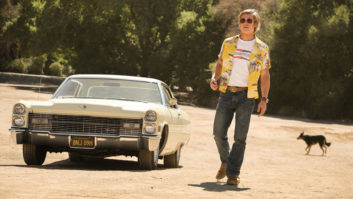

Though still hardly a household name, Jason Miles keeps turning out records that gain praise from his peers and the public. This year, Miles received a Grammy nomination in the Best Pop Performance category for the song “Chasing Shadows” on his 2004 Telarc release, Coast to Coast. Four years earlier, Sting won a Grammy for Best Pop Male Vocal for his performance on the track “She Walks This Earth,” which Miles produced as part of a recording made in tribute to the Brazilian composer Ivan Lins called A Love Affair: The Music of Ivan Lins. In 2003, the album Miles produced for Gato Barbieri, The Shadow of the Cat, received Billboard‘s Latin/Jazz Album of the Year Award and was nominated for a Grammy. And his most recent CD, Miles to Miles, released on Narada Records in January 2005, is drawing accolades. This work gave Miles a chance to revisit one of his early idols and employers, the legendary Miles Davis.
In the mid-1980s, Miles was one of the premier synthesizer programmers and players on the session scene in New York. The Brooklyn native grew up in the 1960s playing keyboards in rock bands before heading off to Indiana State University, which he left in 1973 with two plums: a degree in English and his wife, Kathy, who remains one of his great inspirations.
His lifelong passion for jazz and an appreciation for the growing synthesizer revolution led Miles to a club called The Joint In the Woods one night in 1974 to check out the band Weather Report. “We’d just moved to Highland Lakes, New Jersey,” says Miles, “and heard that Weather Report was going to be at this club we’d never heard of. We couldn’t find it and were running out of gas when we stumbled across it. I couldn’t believe how packed the place was until I found out it was a disco!”
When the club’s regulars cleared out, a handful of fusion aficionados were all that remained as the band took the stage. “It was really cool,” he recalls. “Wayne [Shorter] and Joe [Zawinul] and the band started playing and there was nobody there. After the set, I started up a conversation with the percussionist, Dom Um Romao, and he gave me his phone number. Dom Um brought me to sessions and introduced me to that scene.”
In 1979, Miles hooked up with Marcus Miller, a connection that led to his work on a series of albums for Luther Vandross and, ultimately, Davis. “Marcus was putting together demos in New York for [Davis’] Tutu, and he asked me to program synths for him. Marcus is an amazing musician. Of course, he’s known for his unbelievable bass playing. He’s not a technical keyboard player, but every note of the keyboard parts on the albums I worked on with him came from him. I’ve even heard Richard Tee come in and lay down some mind-boggling parts and then seen Marcus deconstruct them in his own way. He’s fantastic.”
In the early ’80s, most keyboard players were thrilled at the “realism” of synth patches, but Miles approached things a bit differently than most programmers. “I never was trying to get the perfect string patch. I felt that as a musician, I should be able to create textures that came from inside a particular piece of music.” That approach caught Davis’ ear, who appreciated the sounds that Miles had created for the Marcus Miller demos that ended up on Tutu.
“Miles [Davis] liked what we’d done, but there wasn’t anything in the budget to cover sending me out to L.A. when they started recording,” Miles says, “so Marcus rented an Emulator and some of the other stuff I’d created sounds on out there. I’d set my rig up on the East Coast while they were working in L.A., and we’d discuss things over the phone in real time.”
After completing the L.A. sessions, more tracks were cut in New York at Clinton Studios, and that’s where Miles met Davis: “I introduced myself, and he said, ‘I like your name.’ I told him that I would do whatever was necessary to get the job done for him and saw that I had survived!
“Slowly but surely, Miles took me in, and after Tutu, we worked on two more albums together: Music From Siesta and Amandla. We became friends.”
Tutu kicked Miles’ career to another level. The jingle scene was jumping, and he became a first-call programmer and player. The record industry was also beating a path to his door. By the time the ADAT revolution hit, Miles was producing out of a project studio in his upstate New York home. Then a call from Jay Beckenstein led to a recording contract with Telarc Records.
“Jay told me he had a solo deal and wanted me to produce some material for his record,” Miles recalls. “I was burned by the music business and didn’t even know if I wanted to participate in the projects, but he wanted me to work up a new version of [Weather Report’s] Black Market. It worked out well, and when Jay told me that he thought I should do an entire album of Weather Report tunes, I thought it was a good idea.”
A series of demos Miles put together led to Celebrating the Music of Weather Report, his 2000 Telarc debut. By this time, he was recording all over the country on ADATs and bringing back the tapes to his project studio, where he and his longtime engineer Doug Oberkircher mixed on an Ensoniq PARIS hard disk recording system.
“Hard disk recording has helped me learn about engineering in a big way,” he notes. Even though I had hung out with Al Schmitt, Ray Bardini, Frank Filipetti, Doug Oberkircher and some other great engineers, until I got my own system, I hadn’t realized that I could track properly. Of course, I still use Doug or another engineer to mix my albums, but I’m very comfortable tracking most anything, except for drums.”
In addition to his PARIS rig, which runs on a 733MHz G4, Miles also has a Digi 002R running on a laptop. This rig lets him import Pro Tools sessions from anywhere in the world, which he asks for as SDII files that he then imports into PARIS. Miles also has some favorite pieces of outboard gear that he and Oberkircher use to capture the warm, analog-sounding recordings for which they have become known. “I have a D.W. Fearn VTR stereo mic pre that’s simply magical-sounding and a pretty nice collection of microphones.
“I love the Groove Tubes for lots of stuff, and I can’t believe how good the Studio Projects mics sound, especially since they’re so inexpensive. I like to record acoustic guitars with a combination of AKG 451s and 414s. I’ll go from the Fearn into a Millennia Media opto tube compressor — a killer combination. I’ve also had a pair of KRK Expose 8s for about five years. I love those speakers; they’re accurate and you can listen to them for a long time without suffering any ear fatigue.
“When we’re ready to mix, we go out of PARIS into a Lucid Technology 9624 AD converter, then into my Alesis Masterlink at 96 kHz/24-bit. That’s the path we always take, and I’m pleased with the warmth of the sound that we’ve gotten.”
Miles adds that it may be time to move past some of the hardware that brought him stature and success. “What’s going on with soft synths and samplers is fantastic,” he says. “Don’t get me wrong, there are some great hardware synths out there. My current favorite is the Nord Electro 2, and I also have a Generalmusic Promega 3 piano, which is very good, a Roland XV5080 and a Korg TRITON Extreme. They put a tube in the Extreme that helps a lot. I also rely on my Roland JP-880, which simulates an analog synthesizer really well and, of course, my trusty Minimoog, which I’ve had for 20 years. It still rocks the house. But you have to stay with the times, and my next move will be into a super-fast computer that can handle digital recording and lots of soft synths and samplers.”
Davis got to use the full range of Miles’ studio equipment on Miles to Miles, a project that looked to both his past and present. “I didn’t produce this CD as a tribute record, although it may seem that way at first glance,” Miles says. “This music represents the influence that Miles had on me, and I reflected that influence by writing musical stories of my experiences with him. All of the songs have a story behind them. For example, ‘Ferrari’ is a picture of my day at his house in Malibu [Calif.] back in 1989, a day that ended with him taking me for a ride up the Pacific Coast Highway in his Ferrari.
“When you think about Miles, you always think of someone who was on the tip of creativity in music,” he continues. “I wanted to be involved with cutting-edge musicians. I never thought about having a trumpet that would sound like Miles on this record — I just thought about who would play a given melody great. I also morphed live players with electronic textures to make a hybrid blend of acoustic and electric instruments. A song like ‘Love Code,’ for example, has real instruments, live drums and looped percussion.
“I always loved ‘Flamenco Sketches’ from Kind of Blue. The solos were so lyrical — they sounded like written melodies. It was a very impressionistic piece. Since this CD was a series of impressions of the influences that I picked up from Miles, I decided to record ‘Flamenco Sketches’ in my own way, accenting the improvisations that he and John Coltrane created and morphing them into a melody for the song.”
Miles’ next project pairs him with an old friend, Nashville-based singer Suzy Bogguss. “We’re going to produce a hybrid sound that fuses the sounds of New York and Nashville. We’ll take Suzy’s Nashville singing and song sensibility and combine it with the New York groove and vibe that I specialize in. I’m very excited about this project.”

Click here to listen to clips from Jason Miles‘ Miles to Miles CD.
